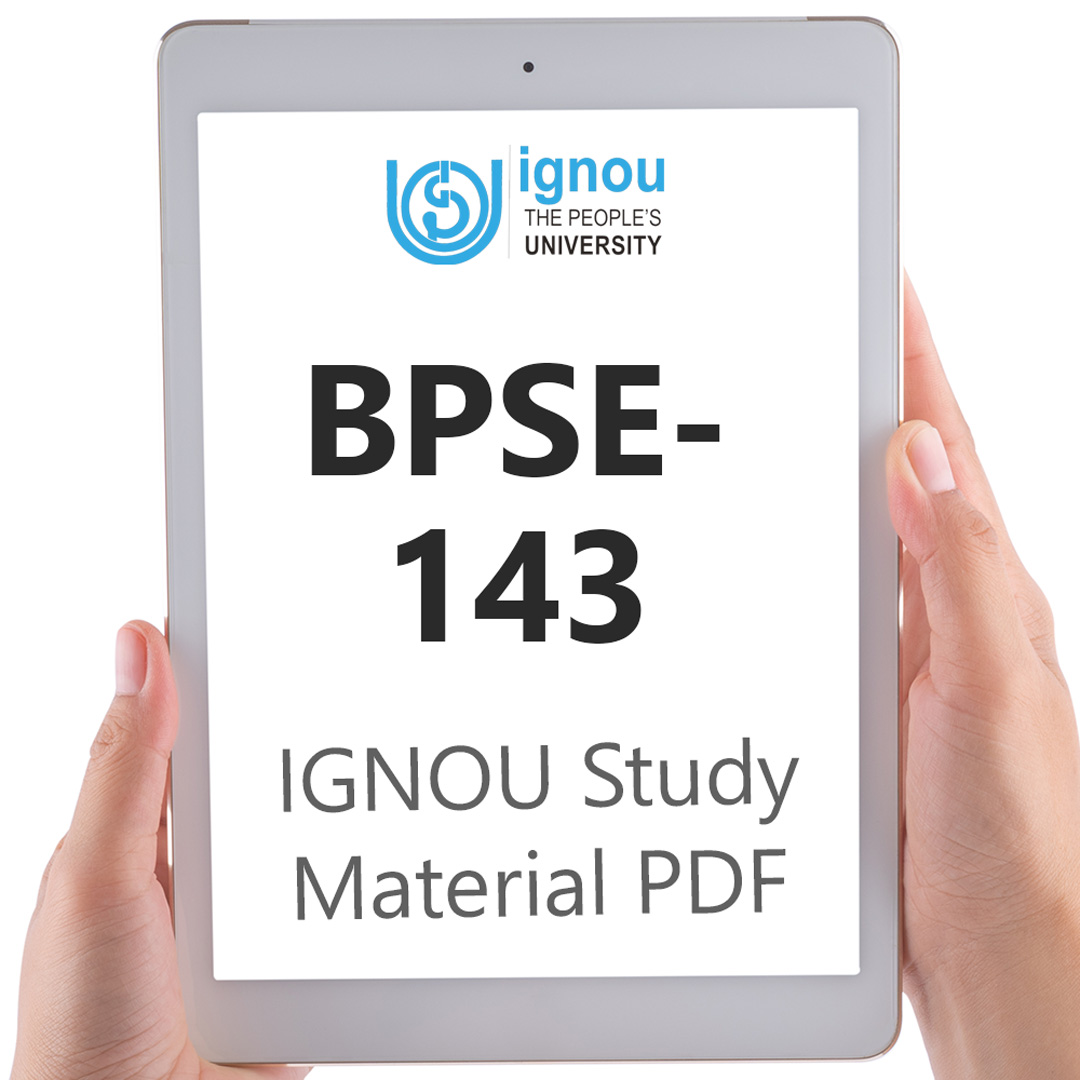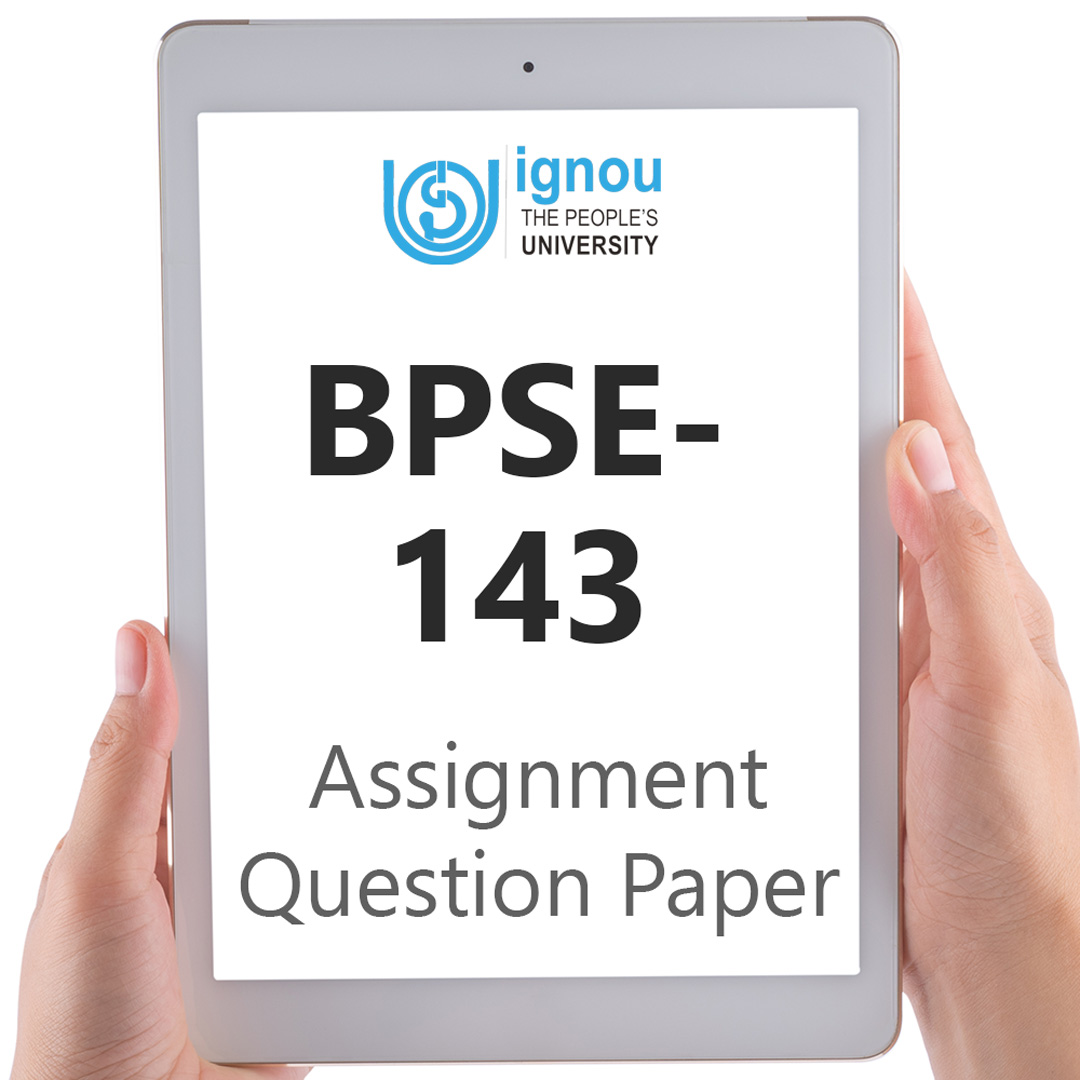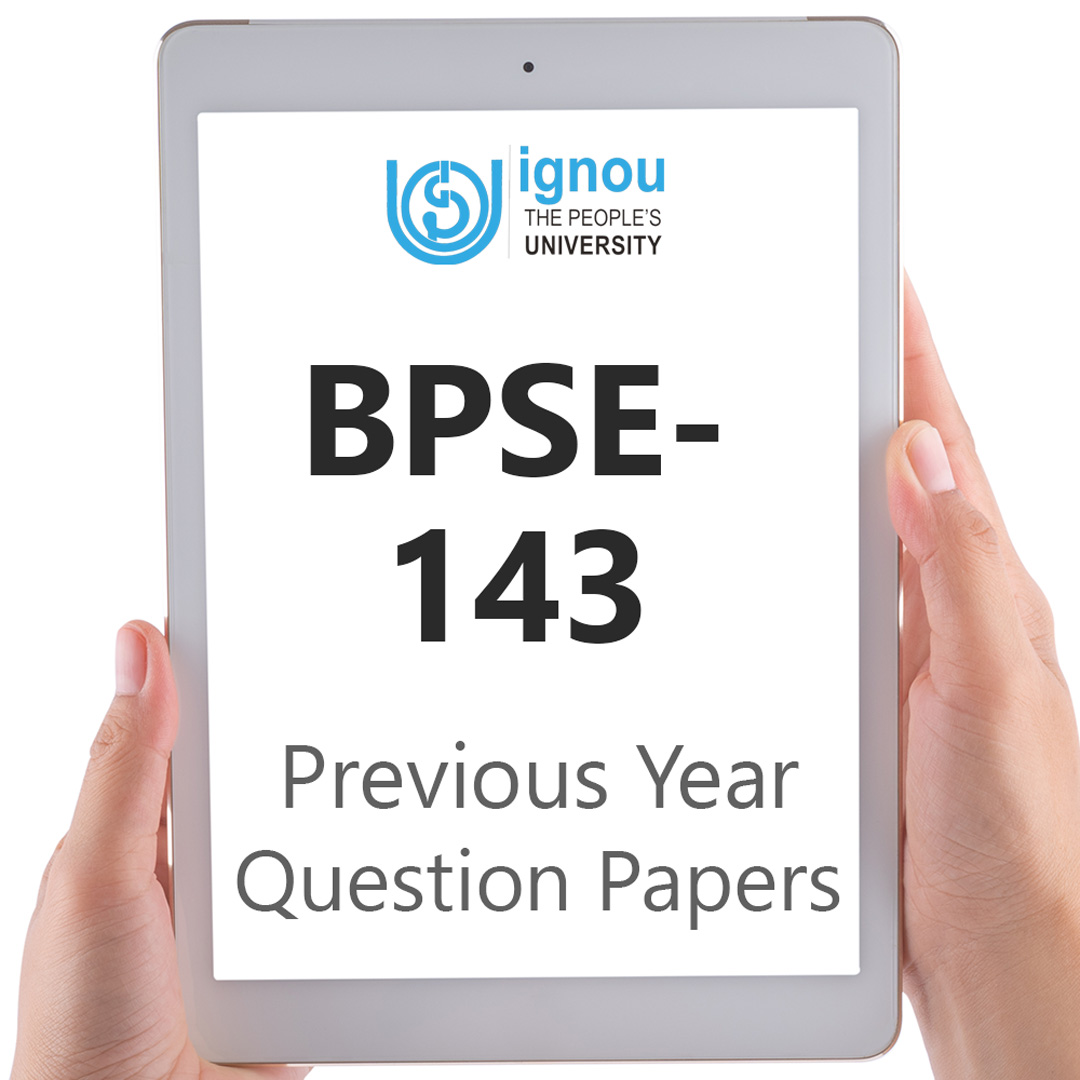If you are looking for BPSE-143 IGNOU Solved Assignment solution for the subject State Politics in India, you have come to the right place. BPSE-143 solution on this page applies to 2022-23 session students studying in BAPSH, BAG courses of IGNOU.
BPSE-143 Solved Assignment Solution by Gyaniversity
Assignment Code: BPSE-143/ASST/TMA/2022-23
Course Code: BPSE-143
Assignment Name: State Politics in India
Year: 2022-2023
Verification Status: Verified by Professor
Answer all questions in the three Assignments and submit them together.
Sectiom-1
Answer the following in about 500 words each. 20x2
Q1) Discuss the evolution of local Self-government in India.
Ans) In the post-Independence period, the Panchayats have played significant roles in implementing and extending public policies at the local level of governance in Indian.
Community Development Programme and National Extension Services
The Community Development Programme was launched on October 2nd, 1952, to mark Gandhi’s birth anniversary. It was the first programme following Independence, aiming to promote people’s participation in local development activities. One year after the launch of CDPs in 1952, the government decided to launch the National Extension Service on October 2nd, 1953. The NES was implemented in the areas not covered by CDP. The main aim of NES was to extend scientific and technical help to the villagers to improve their economic and social conditions. Following the introduction of the NES, the entire country would benefit from the development policies targeting village society.
Balvant Rai Mehta Committee (1957)
Five years after introducing the Community Development Programme, The Planning Commission appointed on 16th January 1957 a committee known as Balwant Rai Mehta Committee after the name of its chairman Balwant Rai Mehta to examine the impact of CDPs and NES.
The Committee submitted its report on November 24th, 1957, and recommended establishing a three-tier Panchayati Raj system:
Gram Panchayat at the village level
Panchayat Samiti at the block or Taluk level
Zilla Parishad at the district level.
The other significant recommendations of the committee were that the government should divest itself completely of specific duties and responsibilities and devolve them to a body that will have the entire charge of all development work within its jurisdiction; the government should reserve with it only the functions relating to guidance, supervision, and higher planning.
Ashok Mehta Committee (1977)
After the Janata Government came to power, in Center appointed a committee on Panchayati Raj institutions under Ashok Mehta’s chairmanship in December 1977 to suggest measures to revive and strengthen the Panchayati Raj system in India. The Committee submitted its report in August 1978 with 132 recommendations to revive and strengthen the Panchayati Raj system. The committee’s key recommendations were the two-tier system should replace the 3-tier system of Panchayati Raj, i.e., Zilla Parishad at the district level, and Mandal Panchayati or Parishad consists of few villages covering a population of 15000 to 20000. A district should be the first point for decentralisation, and Zila Parishad should be the executive body responsible for planning at the district level. The Panchayati Raj institutions should have powers of taxation to mobilise their financial resources.
G V K Rao Committee (1985)
The GVK. Rao Committee was appointed by Planning Commission in 1985 to look into various aspects of Panchayati Raj Institutions and its existing administrative arrangements for poverty alleviation programmes. The Committee’s major suggestions were the PRIs have to be activated and provided with all the necessary support to Panchayati Raj Institutions at the district, Taluk, and Village level should be assigned local planning work, implementation, and monitoring of rural development programmes.
LM Singhvi Committee (1986)
The Rajiv Gandhi government set up L. M Singhvi Committee in 1986 to study the problems faced by Panchayati raj institutions. The Singhvi Committee’s significant recommendation was that local self-government should be given constitutional status by incorporating a new chapter in India’s Constitution. The Committee also recommended the Non-involvement of political parties in Panchayati elections.
Q2) Examine the relationship between the federal government and sub-regional autonomy movements in India.
Ans) Federal institutions are essential in the modern, interconnected world. Institutions at the federal level tolerate problems with sub-regional autonomy. The type of connections between a sub-region and the administrative entities points to a federal structure that is accommodating. There are numerous academic publications and journal papers on various sub-regional movements in India
We can pinpoint problems and obstacles pertaining to the sub-regional movements based on this research. While most of these movements have emerged in locations that are considered to be more underdeveloped, some have also done so. People in the areas where these movements take place have a variety of complaints, including economic, political, social, and cultural ones.
If they receive autonomy in the form of rearranging the relationships within the current administrative unit or by obtaining a new state created out of one or more existing states, their complaints can be resolved. It is significant to emphasise that the complaints are frequently unfounded in fact. They are based on perceptions in these situations. In the literature on the sub-regional autonomy movements, the following explanations have been presented as the causes of such complaints:
Economic Reasons
People who live in the places where the sub-regional autonomy movement is taking place say that their region has been economically abused as a result of state or federal policies that have control over such matters. It is said that in some circumstances, their regions have turned into "internal colonies" as a result of the groups from other regions exploiting the natural riches of their own. Additionally, they claimed that they experience prejudice when applying for jobs in their localities because those positions are frequently filled by outsiders.
It is asserted that people migrate to other areas because of the lack of economic prospects in their home regions. It causes a variety of issues, including their degrading treatment in the areas where they move. Economic discrimination is a complaint that is not just made by underdeveloped areas but also by certain developed nations. They claim that while their resources are used to support those in need, they do not receive compensation commensurate with those resources.
Political Reasons
The proponents of sub-regional autonomy movements contend that there is insufficient representation of their region's citizens in key governmental posts such as ministers, chief ministers, etc. This denies the inhabitants of such regions the chance to speak up for those regions' interests during the formulation of policy.
Social and Cultural Reasons
People in the sub-regions calling for autonomy claim that their social and cultural identities are not given the proper acknowledgment in media like theatre and film. Their representation in works of art and popular culture is dishonourable.
Administrative Challenges
The executive authorities, such as chief ministers, leaders, or administrative authorities, are said to pay insufficient attention to all sub-areas, particularly in the larger states, making it difficult to coordinate the issues of various regions. It is difficult to manage the administration of all the regions fairly due to the larger size of the states in which they are located. As a result, areas far from the state capital are negatively impacted.
The mobilisation for regional autonomy is impacted by a combination of these key obstacles and problems. However, several points deserve attention because of how they affect mobilisation. These include: the relative impact of these issues varies from situation to situation; these issues can only be useful in mobilisation when there is a realisation among the people in a region of their grievances; and when there are organisations like leaders, students, intellectuals, or civil society organisations to mobilise people.
Section-2
Answer the following questions in about 250 words each. 10x3
Q1) Examine the relationship between migration and globalization.
Ans) Globalization has created new opportunities of employment to migrant workers, it has also generated risks and uncertainties for them. A French sociologist, Guy Standing has conceptualized such risks and uncertainties as precarity, which is known as Standing’s theory of global precarity. According to this theory, migrant workers face various types of distress which can be labelled as four A’s- anger, anomie, anxiety, and alienation.
The distress and anxiety arise from labour market flexibility under global capitalism. They face various insecurities such as lack of income-earning opportunity, job insecurity that is vulnerability to hiring and firing, lack of upward mobility, work insecurities like hazardous working conditions and long working hours causing fatigue, absence of opportunity for training and skill development, income insecurity, and lack of political representation. The migrant workers in the unskilled segment mostly constitute unorganized labour that lacks these basic rights of industrial citizenship.
Globalization has therefore come with a mixed baggage of opportunities and challenges for migrant labourers. The pull factors of the point of destination have indeed propelled migration from small towns and villages. The construction industry today serves as the basic site of migration as also infrastructure and service sectors. But the challenges and precarities of migration in the new economy are even more hard pressing as indicated by Guy Standing. The workers get entrapped in a complex web of insecurities and due to lack of political representation at the point of destination. They fail to get their problems addressed at the governmental level. The collective voice for grievance redressal for the migrant migrants is generally missing.
Q2) Explain the various approaches to the study of state politics in India.
Ans)
The European Bias
Academics have long been interested in "nation-building," but "political development" in the contemporary meaning, i.e., theories concerning nation-building, is a comparatively recent sub-field of study. It began to take shape three or four decades ago, when nations classified as politically and economically underdeveloped started to receive more academic attention, particularly in the United States. As a result of these developments, there have been an abundance of publications that either propose or challenge theories of political growth. But generally speaking, there seem to have been three main approaches to studying political development or underdevelopment.
The Dependency Approach
American academics have only lately acknowledged or embraced this theory, it may be one of the earlier ones in the subject of political evolution. The Economic Commission for at in America, along with individuals from central banks and local government planning organisations, initially developed it in the 1940s. These were people who were becoming more and more concerned with explaining and resolving some of the issues they came across, issues that appeared to have grown more pressing in the region as a result of Latin America's shifting political and economic ties with the West, particularly with the United States.
The Evolutionary Approach
Social scientists in America began to focus more on the "developing areas" about the same time that the dependence theory was growing in Latin America. Perhaps this was a reaction to two key aspects of the time, according to Tipps: "a widespread attitude of complacency toward American society, and the expansion of American political, military, and economic interests throughout the world," both outcomes of post-war prosperity and political stability. The institutions and principles of American society "provided an adequate model to be copied by other, less fortunate cultures," according to American scholars, at least as they existed in their more idealised expression.
Q3) Discuss the political ideology of Dravida Munnetra Kazhagam Party.
Ans) The regional parties brought up the subject of autonomy and pressed for increased authority and financial resources. The DMK party in Tamilnadu created a powerful campaign for autonomy by fusing Tamil language and cultural nationalism. The DMK ran a campaign for Tamilnadu to be an independent, sovereign state in the beginning of the 1960s. Later, the demand was expanded to include Tamilnadu, Andhra Pradesh, Kerala, and Karnataka in a distinct Dravidnad.
The Center considered it to be a serious danger to the integrity of the country. The 16th Constitutional Amendment was brought about by the union government in response to the country's rising separatist impulses in the 1960s. The Anti-secession Bill, which later became an Act, was created to thwart separatist and secessionist movements to protect India's sovereignty and territorial integrity. As a result of the modification, the DMK likewise progressively changed its position and abandoned the call for a sovereign Dravidanad. However, the DMK always called for further state autonomy.
A three-person committee headed by P.V. Rajamannar was created by the DMK-led government of Tamilnadu in 1969 to analyse ties between the centre and the states and make recommendations for constitutional revisions to grant the states more autonomy. P. Chandra Reddy and Lakshmana Swamy Mudaliar also served on the committee. The Rajamannar Committee recommended a number of changes, including the removal of Article 356 and the creation of a permanent Finance Commission. It also suggested moving some topics from the Union and Concurrent lists to the State list and appointing a high-power committee to oversee the subject transfers between the three lists.
Section-3
Answer the following questions in about 100 words each. 6x5
Q1) Write a brief note on Chipko Movement.
Ans) The non-violent Chipko Movement was born in the Garhwal Himalayan mountain range, which is now part of the state of Uttarakhand. Massive floods in the Alaknanda Valley region in 1973 devastated homes and other property. The women noticed the axe-wielding workers one day. Commercial contractors had dispatched these labour to chop the trees. In their outcry, the women pledged to defend the trees. Small groups of women hugged the trees and kept watch constantly to stop the felling. The movement was greatly successful and was led by Sundarlal Bahuguna, Gauri Devi, and Gunga Devi, along with their co-workers.
Q2) Explain the Residuary powers of legislation.
Ans) A residuary power is a power retained by a governmental authority after certain powers have been delegated to other authorities.
Residuary Powers are special powers entrusted by the Constitution, to the Union Government.
The Parliament has powers to make any law with respect to any matter which is not a part of the Concurrent List or State List.
Article 248 of the Indian Constitution deals with the Residuary powers of legislation. The Residuary powers legislation is given to Center, and Parliament of India alone can make legislation on the subjects not included in any of the above three lists. This residuary power consists of the power to levy any residuary taxes also.
Q3) Briefly discuss the Punjab Model of Development.
Ans) Punjab's development model shows how agriculture can drive growth and development in Indian states and regions. Punjab saved the country from famine in the 1960s. War with China and Monsoon failure exacerbated the food problem. Green Revolution helped India become food self-sufficient. Punjab used high-yielding crops, pesticides, fertilisers, and machinery during the Green Revolution. The Green Revolution aimed to make India self-sufficient in food production. With inputs, tractors, and other tools.
Punjab's agriculture has changed quickly. Wheat and rice production soared because of the green revolution. The Minimum Support Price and state procurement programme for both crops ensured a minimum income for the state's farmers. Green Revolution affected class formation and employment in Punjab. Commercial farmers in the state suggest the former. This created jobs for migrant farmworkers from disadvantaged regions, mainly eastern Uttar Pradesh, and Bihar. Punjab's per capita income reached the Indian average within a decade. Punjab's agricultural model was one of India's most successful after independence.
Q4) Discuss the Kerala Model of Development.
Ans) The Kerala Model is well renowned for placing a strong emphasis on human development, particularly in the areas of education and health. For a number of years, Kerala has been credited for improving its human development score. Kerala's progress was cited as an example in a United Nations study from 1975. Amartya Sen and Jean have highlighted Kerala's success by citing measures of human development in a number of their works. In terms of women's welfare, education, and health, Kerala's development metrics are relatively comparable to those of affluent nations.
Kerala emphasised tourism and cooperatives. Rural and urban growth equity was the goal of both strategies. This model was put into use by the leftist administration. Kerala's development strategy was more effective than West Bengal's, which focused on urbanisation and industrialization and was more rural-centric. Model of bottom-up development used in Kerala. Local self-government organisations contributed to the success of state-run social programmes. Women's engagement has aided Kerala's development efforts. This inclusive development has also been influenced by Kerala's bipartisan coalition politics, which includes left-leaning governments, the Indian National Congress, and religious organisations, particularly Muslims and Christians.
Q5) Write a brief note on the Marxian framework.
Ans) With the help of social relations of production and forces of production, the Marxian framework analyses politics. It views politics as an expression of class dynamics. Economic interactions within a society have an impact on or determine politics. The state and other political institutions serve as advocates for class interests. The Marxian framework, in contrast to the systemic framework, connects the politics of a developing nation to the imperialism of the industrialised nations. The terms of international financial institutions like the World Bank and the International Monetary Fund have an impact on imperialism on the politics in developing nations.
Due to these conditions, the states in emerging nations create policies that have a negative impact on the common people. The response of the populace to these measures is a component of the class struggle against the governing classes. The Marxian paradigm, in contrast to system analysis, links politics to their past. To understand social and political reality, it applies the dialectical materialism theory. Historical materialism is the term for the application of dialectical materialism.





